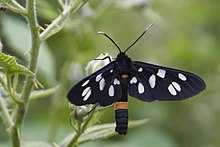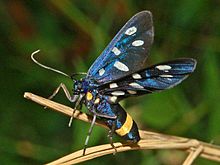
The Queen of Spain fritillary is a butterfly of the family Nymphalidae.

Cyaniris semiargus, the Mazarine blue, is a Palearctic butterfly in the family Lycaenidae.

Acraea terpsicore, the tawny coster, is a small, 53–64 millimetres (2.1–2.5 in), leathery-winged butterfly common in grassland and scrub habitats. It belongs to the Nymphalidae or brush-footed butterfly family. It has a weak fluttery flight. It is avoided by most insect predators. This species and the yellow coster are the only two Indian representatives of the predominantly African tribe Acraeini. It is found in India, Sri Lanka, Maldives to Myanmar, Thailand, Laos, Cambodia, Vietnam, Bangladesh, Singapore, and recently Australia

Hyles gallii, the bedstraw hawk-moth or galium sphinx, is a moth of the family Sphingidae. The species was first described by S. A. von Rottemburg in 1775.

Macrothylacia rubi, the fox moth, is a lepidopteran belonging to the family Lasiocampidae. It was first described by Carl Linnaeus in his 1758 10th edition of Systema Naturae.

Erebia euryale, the large ringlet, is a species of butterfly belonging to the family Nymphalidae.

Erebia alberganus, the almond ringlet or almond-eyed ringlet, is a butterfly of the family Nymphalidae.
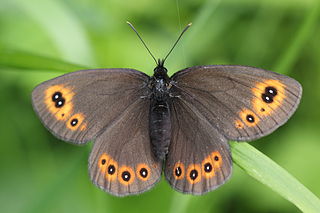
Erebia medusa, the woodland ringlet, is a member of the subfamily Satyrinae of the family Nymphalidae.

Zygaena ephialtes is day-flying species of burnet moth found in Europe. It is typically found in xeric habitats, and populations have recently decreased. It also exhibits Müllerian mimicry with other species, like Amata phegea.
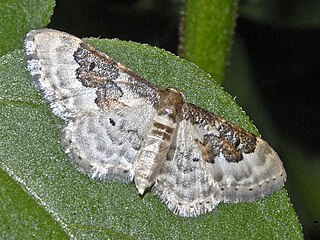
Idaea rusticata, the least carpet, is a moth of the family Geometridae. The species was first described by Michael Denis and Ignaz Schiffermüller in 1775.
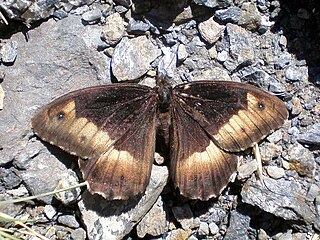
Hipparchia fagi, the woodland grayling, is a butterfly of the family Nymphalidae.

Arctia villica, the cream-spot tiger, is a moth of the family Erebidae. The species was first described by Carl Linnaeus in his 1758 10th edition of Systema Naturae. It is distributed from the Iberian Peninsula across western and southern Europe, Anatolia, western and northern Iran, western Siberia, southwestern Asia and North Africa.

Utetheisa pulchella, the crimson-speckled flunkey, crimson-speckled footman, or crimson-speckled moth, is a moth of the family Erebidae. The species was first described by Carl Linnaeus in his 1758 10th edition of Systema Naturae.
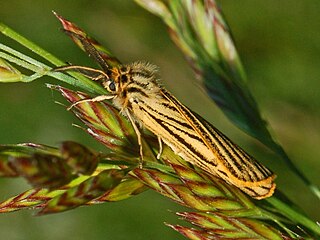
Spiris striata, the feathered footman, is a moth of the family Erebidae. The species was first described by Carl Linnaeus in his 1758 10th edition of Systema Naturae.

Eilema caniola, the hoary footman, is a moth of the family Erebidae. The species was first described by Jacob Hübner in 1808.

Melitaea didyma, the spotted fritillary or red-band fritillary, is a butterfly of the family Nymphalidae.

Pontia edusa, the eastern Bath white, is a butterfly in the family Pieridae.

Clostera pigra, the small chocolate-tip, is a moth of the family Notodontidae. The species was first described by Johann Siegfried Hufnagel in 1766. It is a Palearctic species found from Europe ranging to Morocco in the south and eastern Asia in the east.

Kretania martini, or Martin's blue, is a species of North African butterfly in the family Lycaenidae and the subfamily Polyommatinae.
